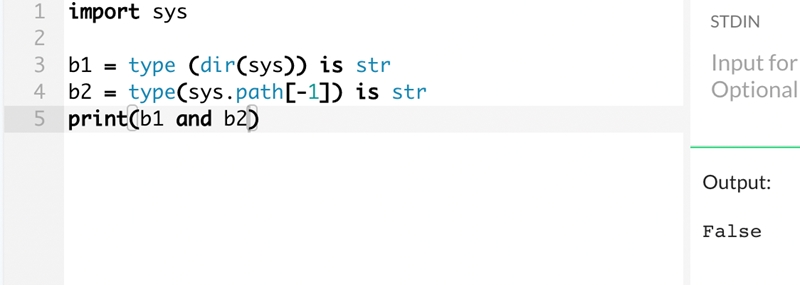What is the expected behavior of the following code?

What is the expected behavior of the following code?

D

answer: D. 5
The function foo takes two arguments, x and y. x is just a regular variable, while y is a function that takes one argument. In the body of the function, y(x) is the first function call. This calls the function y with x as its argument. In the example code, y is a lambda function that squares its argument, so y(x) computes the square of x. The second function call is y(x+1). This calls the same y function, but with x+1 as its argument. In the example code, this computes the square of x+1. Finally, the two results from the function calls are added together, and the sum is returned by foo. In the example code, foo(1, lambda x: x*x) is called. This passes 1 as the value of x and a lambda function that squares its argument as the value of y. Therefore, y(x) evaluates to 1 squared, which is 1, and y(x+1) evaluates to 2 squared, which is 4. The sum of these two values is 5, which is the value returned by foo.
Thank you for explaining really well
Can someone please walk me though how we get the answer 5 from this? def foo(x,y): return (y(x) + y(x+1)) print(foo(1, lambda x: x*x))
The function foo takes two arguments, x and y. x is just a regular variable, while y is a function that takes one argument. In the body of the function, y(x) is the first function call. This calls the function y with x as its argument. In the example code, y is a lambda function that squares its argument, so y(x) computes the square of x. The second function call is y(x+1). This calls the same y function, but with x+1 as its argument. In the example code, this computes the square of x+1. Finally, the two results from the function calls are added together, and the sum is returned by foo. In the example code, foo(1, lambda x: x*x) is called. This passes 1 as the value of x and a lambda function that squares its argument as the value of y. Therefore, y(x) evaluates to 1 squared, which is 1, and y(x+1) evaluates to 2 squared, which is 4. The sum of these two values is 5, which is the value returned by foo.
Let's analyze the function `foo` with the provided arguments: 1. `x` is `1`, and `y` is a lambda function defined as `lambda x: x*x`, which squares its input. Here's how `foo` works in this case: - `y(x)` with `x` being `1`, evaluates to `1*1`, which is `1`. - `y(x+1)` with `x+1` being `2` (since `x` is `1`), evaluates to `2*2`, which is `4`. Adding these results together gives `1 + 4`, which equals `5`. Thus, `print(foo(1, lambda x: x*x))` will output `5`.